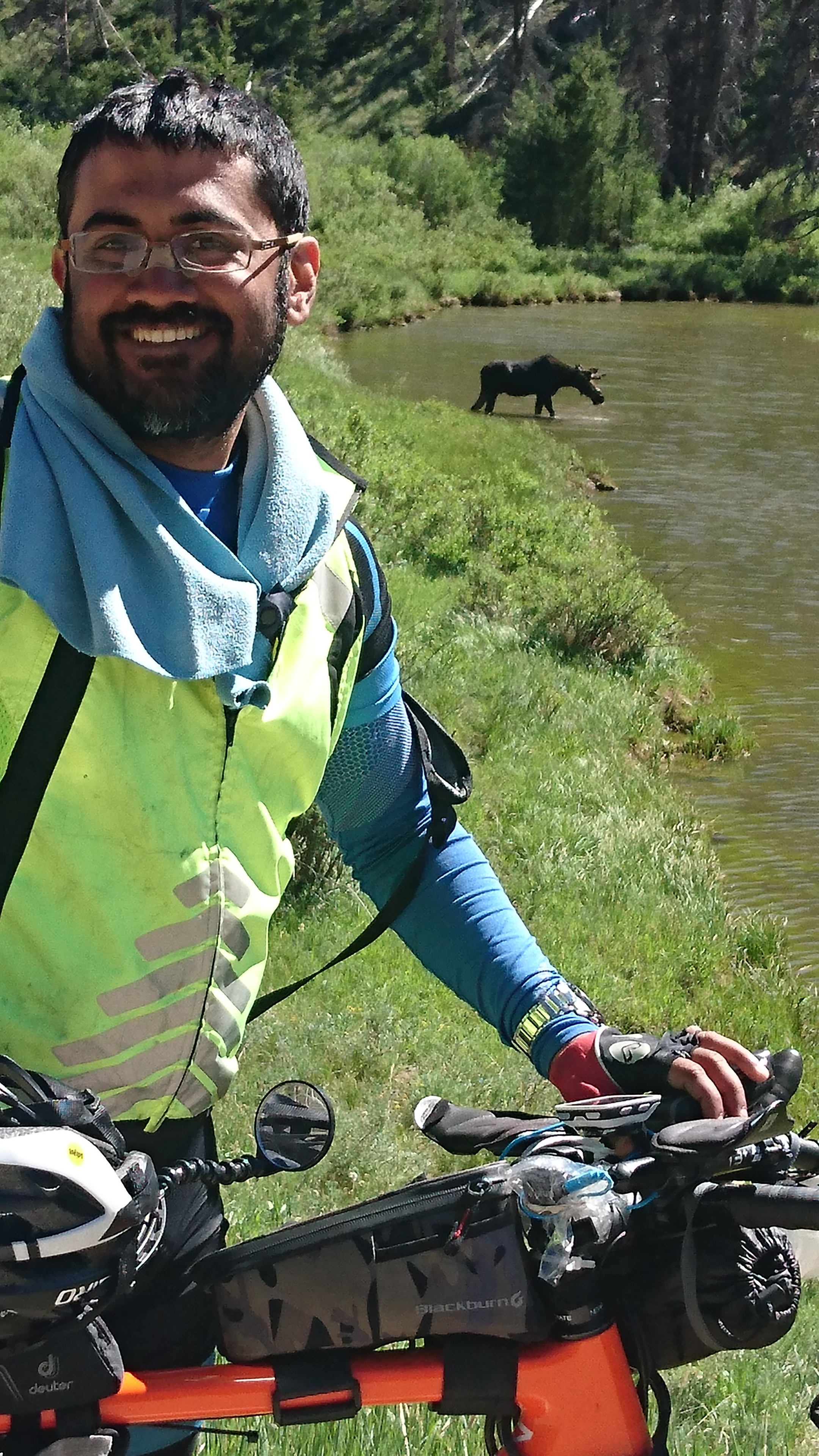Post ride bike inspection and cleaning
Here, I'll describe what I call a post-ride functional cleaning of a bike. A functional cleaning is cleaning from a mechanical perspective, and is not quite the same as cleaning from an aesthetic perspective. It's not about making the bike look good, but ensuring that crucial mechanical parts are clean enough to keep damage at bay. A functional cleaning can be achieved fairly quickly, leaving out parts which are not needed, depending on the nature of the ride.
After each ride, a bike picks up a lot of dust, which usually gets stuck to the chain and the gear cogs, but each normal ride shouldn't necessitate a thorough functional cleaning. However, riding in wet conditions (rain/snow/slush) is very different. A bike sees significantly increased wearing out of brake pads, while riding in wet conditions. This is because loose grime gets picked up and coated onto the sides of the wheel (rim) and each time you brake, the grime/gravel has a sandpaper effect, on both the rim and the brake pads. While riding in wet conditions, try to consciously keep braking to a minimum. While riding in a group, you may need to hit the brakes once in a while to ensure safe separation between you and the rider ahead of you, but otherwise, slow down with a combination of easing off on the pedaling, and higher gearing. After the ride, you'll see a lot of brake pad and grime residue on the rim, and some brake pad powder residing on the surface of the brake pad itself. You need to wash these off carefully, using a steady stream of water if possible, or at least a clean and wet rag. When using a rag, ensure you are removing the residue completely, and not just redistributing it across the surface. Examine brake pads for wear; if worn out, replace, as worn out pads not only don't work but can also damage your wheel. Ensure also that the brake pads haven't gone out of position, during the ride. Mispositioned brake pads can lead to degraded braking and/or accelerated tire wear. If it rubs against the tires, it can even lead to a nasty tire explosion on a ride which sees a lot of braking action. Reposition and adjust, if necessary and tighten in place. If your wheel has wear detectors, check for their presence while cleaning. Don't risk riding with a worn out wheel. Check brake cables for frayed endings. Fraying is like cancer; it'll spread, so at first sign of fraying, replace the cable.
Riding in wet conditions also means that the underside of the bike would be coated with a lot of muck, some of which might even be covering the gear cables, if your cables run along the under-surface of your bike frame. Clean carefully, ensuring that all of that dirt is removed. Failure to clean this might result in accelerated cable wear/corrosion. Check gear cables too for fraying at ends, or corrosion or broken strands along the length. Replace without delay if you spot any strand breakage or fraying.
A commonly ignored component is the front derailleur; give it a thorough cleanup, to ensure that it doesn't rust. Coming to the gears and the rear derailleur, my favorite way to clean the gear cassette is to use a shoelace dipped in detergent. You can wrap the detergent soaked shoelace between gear cogs, and give a tug, to remove the hard to reach crud from between the gear cogs. Use an old toothbrush to clean the teeth of the cogs, and remove crud and remnants of dirty/broken-down lubricants. Biking with a lot of gunk on your chains/gear cogs is an easy way to quickly wear out the chain and the gear teeth, so you'll need to really keep them clean. Use a chain cleaner to clean the chain or an rub an old toothbrush soaked with soap water while pedalling, to clean the chain and the derailleur jockeys. While cleaning, ensure that you don't shoot jets of water into the bottom bracket or into your seatpost. Water on the inside of seatposts causes internal corrosion and many people damage their bottom brackets more while cleaning, than while riding. Use a toothpick to gently pull out debris from around the bottom bracket/axle or a rag to wipe it clean. Since you already have some soap solution, you may clean out grease/dirt spots from various parts of the bike frame, to ensure that you also get it looking shiny, while giving it a functional cleaning! Clean with more fresh water, to ensure that you don't leave any detergent residue on the wheels/chain/gears.
That pretty much sums up the functional cleaning. Remember to allow the bike to dry completely before reapplying lubrication. Also, lift the front wheel and angle the bike at 90 degrees, to check if any water is trapped within the frame. You can now lubricate the bike. Don't forget to gently lube the front derailleur, axle and around the hubs, with gently being the operating word! Too much lube is bad. Your bike is now ready for your next big ride!
